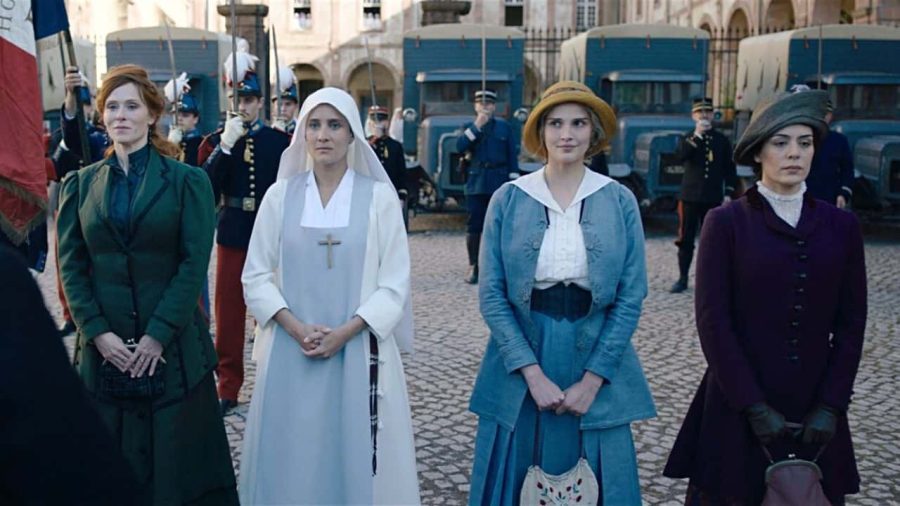Netflix’s Women at War
World War II has been a prominent topic in Hollywood for years now. Though the bloody event officially came to an end in September of 1945, it has continued its fight in the cinematic world. From Inglourious Basterds to Dunkirk and Hacksaw Ridge, there are a plethora of World War II films which have faced international acclaim and became household names.
However, Hollywood has long overlooked the ordeal that led to this important historical event: World War I. Until Sam Mendes’s 1917, films on World War I were mostly all outdated, unheard of, or rife with historical inaccuracy. When 1917 won three Oscars in 2019 thanks its masterful shots, stirring performances, and departure from the formulaic war plot, it skyrocketed to become arguably one of the greatest war movies ever created. 1917 was followed by Netflix’s All Quiet on the Western Front, which received nine Oscar nominations, proving itself to be a true cinematic masterpiece. However, there is no denying that both of these prominent World War I films offer solely male perspectives of the war, even though women played their own pivotal roles on the homefront.
Combatting this singular perspective is Netflix’s new French miniseries Women at War, which provides a heartfelt story of four women whose paths cross during World War I. Though it quickly became a Netflix Top 10, the show has received relatively little recognition – just like the real women of history whose wartime contributions are barely acknowledged.
Women at War takes place in 1914, in the small town of Saint Paulin in France. The German invasion has been going on for a month now and French forces are desperately trying to defend Saint Paulin, which is the only obstacle standing in the way of the occupation of Paris. The opening scene begins with soldiers marching down the road as our first character appears: a woman named Marguerite de Lancastel who is coming to the town in search of work, which she eventually finds at a military brothel. Though she is there to make a living, her true motivation is finding her long-lost son who is a soldier in Saint Paulin.
Meanwhile, we also meet Suzanne Faure, a skilled nurse who is on the run for performing illegal abortions. Snuck into town under the floorboards of a truck, Suzanne seeks refuge in a farm on the outskirts of Saint Paulin, right as German soldiers engage in a skirmish with the farm’s owners. Suzanne is the only survivor and is taken to the convent of Saint Paulin by the Mother Superior, Agnes. The convent has been turned into a hospital as the number of injured French soldiers continues to rise. Staffed by only one doctor and the nuns who are medically inexperienced, Suzanne’s nursing expertise are much needed. She decides to stay at the convent to provide much-needed help.
As the head of the convent, Agnes provides a source of strength to the nuns and soldiers, however, she ends up becoming too close to a wounded soldier suffering from severe PTSD. Despite finding out that he is a German soldier who got mixed up amongst French troops, and her own position as a nun, Agnes cannot help falling in love. She faces great internal conflict, which is only worsened when the priest at the convent discovers her secret, which he uses as leverage to keep her from reporting his abuse towards the young nuns-in-training.
The last woman at the center of the story is Caroline Dewitt, who is put in charge of her family’s trucking business when her husband goes off to war. She is left alone with a hostile mother-in-law, distraught daughter, and her husband’s scheming brother who plans to take over the business for himself. When all of the workers are arrested for desertion after a filing error, Caroline decides to employ the women from the brothel, who have been kicked out for contracting syphilis, including Marguerite.
Caroline converts the company’s trucks into ambulances as there is a lack of transportation for wounded soldiers to reach hospitals, and Marguerite becomes an ambulance driver. Meanwhile, Suzanne and Agnes carry on their important work at the convent, saving numerous lives. All four women soon receive awards from their country for their selfless contributions.
Women at War is yet another addition to the film industry’s wartime reimaginings. However, the series adds a point of originality by sharing the perspective of ordinary female civilians who stepped up to keep the domestic front strong. While Marguerite, Suzanne, Agnes, and Caroline are fictional figures, their stories reflect the realities of many women during World War I. In a dark and desperate chapter of history, women became doctors, business owners, and defenders of their country – something that Hollywood should not forget.

Dahae, an IB senior, returns for her fourth year at the Banner, where she primarily writes about pop culture and current events. She is additionally involved...


